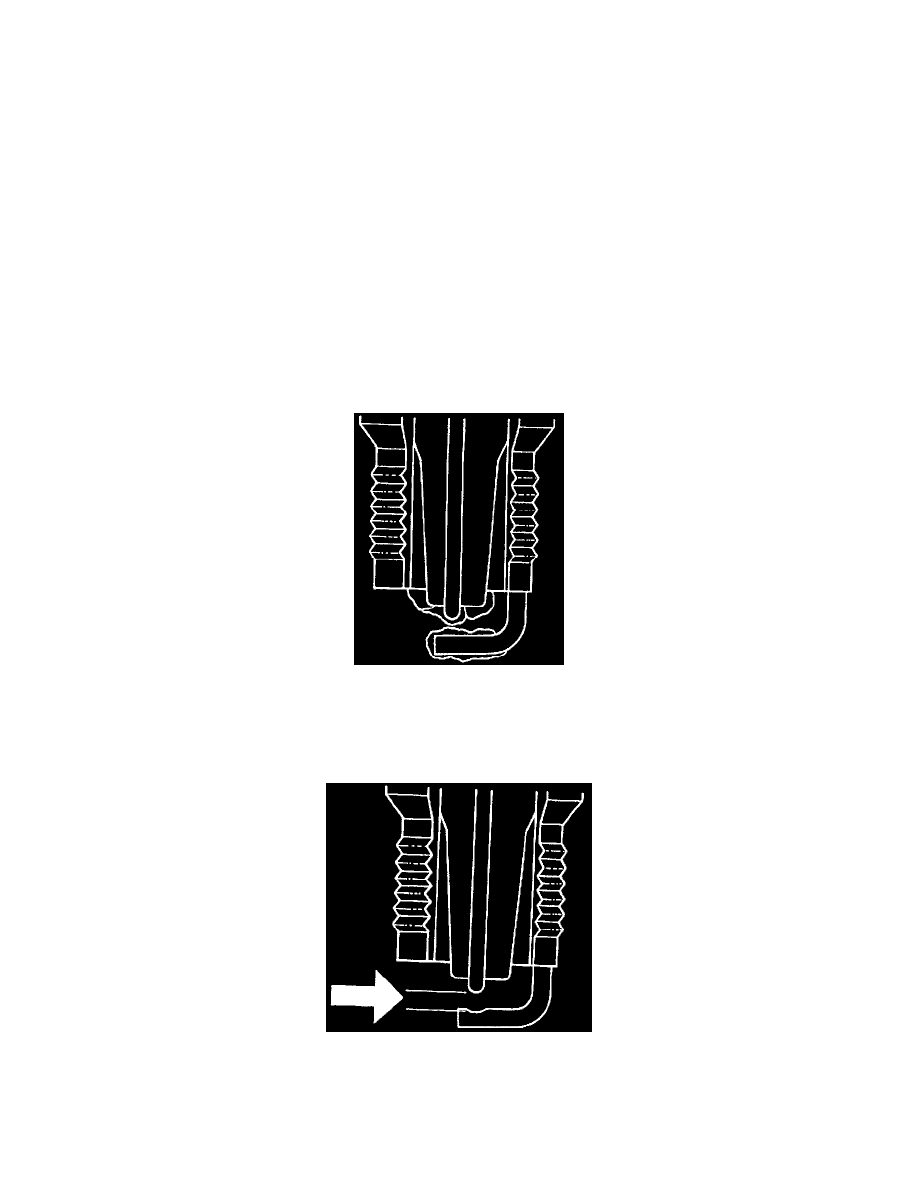Hombre S Regular Cab 4WD V6-4.3L (1999)

Spark Plug: Description and Operation
Spark Plug
Although worn or dirty spark plugs may give satisfactory operation at idling speed, they frequency fail at higher engine speeds. Faulty spark plugs may
cause poor fuel economy, power loss, loss of speed, hard starting and generally poor engine performance. Follow the scheduled maintenance service
recommendations to ensure satisfactory spark plug performance. Refer to Maintenance and Lubrication.
Normal spark plug operation will result in brown to grayish-tan deposits appearing on the insulator portion of the spark plug. A small amount of
red-brown, yellow, and white powdery material may also be present on the insulator tip around the center electrode. These deposits are normal
combustion by-products of fuels and lubricating oils with additives. Some electrode wear will also occur. Engines which are not running properly are
often referred to as "misfiring." This means the ignition spark is not igniting the air/fuel mixture at the proper time. While other ignition and fuel system
causes must also be considered, possible causes include ignition system conditions which allow the spark voltage to reach ground in some other manner
than by jumping across the air gap at the tip of the spark plug, leaving the air/fuel mixture unburned. Misfiring may also occur when the tip of the spark
plug becomes overheated and ignites the mixture before the spark jumps. This is referred to as "pre-ignition."
Spark plugs may also misfire due to fouling, excessive gap, or a cracked or broken insulator. If misfiring occurs before the recommended replacement
interval, locate and correct the cause.
Carbon fouling of the spark plug is indicated by dry, black carbon (soot) deposits on the portion of the spark plug in the cylinder. Excessive idling and
slow speeds under light engine loads can keep the spark plug temperatures so low that these deposits are not burned off. Very rich fuel mixtures or poor
ignition system output may also be the cause.
Oil fouling of the spark plug is indicated by wet oily deposits on the portion of the spark plug in the cylinder, usually with little electrode wear. This may
be caused by oil during break-in of new or newly overhauled engines. Deposit fouling of the spark plug occurs when the normal red-brown, yellow or
white deposits of combustion by products become sufficient to cause misfiring. In some cases, these deposits may melt and form a shiny glaze on the
insulator around the center electrode. If the fouling is found in only one or two cylinders, valve stem clearances or intake valve seals may be allowing
excess lubricating oil to enter the cylinder, particularly if the deposits are heavier on the side of the spark plug facing the intake valve.
Excessive gap means that the air space between the center and the side electrodes at the bottom of the spark plug is too wide for consistent firing. This
may be due to improper gap adjustment or to excessive wear of the electrode during use. A check of the gap size and comparison to the gap specified for
the vehicle in Maintenance and Lubrication will tell if the gap is too wide. A spark plug gap that is too small may cause an unstable idle condition.
Excessive gap wear can be an indication of continuous operation at high speeds or with engine loads, causing the spark to run too hot. Another possible
cause is an excessively lean fuel mixture.
